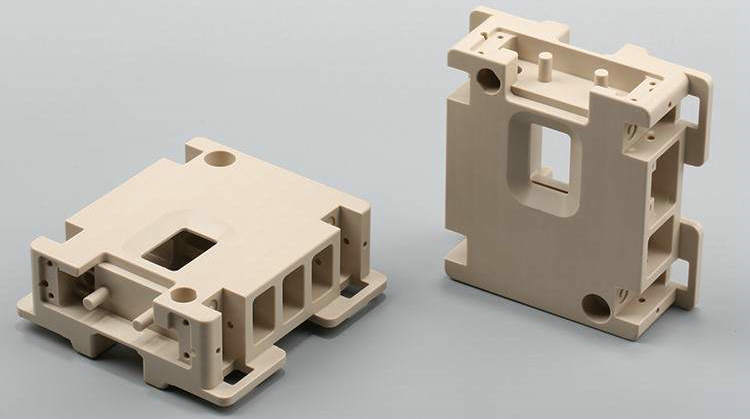
Introduction
Polyether ether ketone (PEEK), a special engineering plastic, is known for its excellent mechanical properties, chemical resistance, wear resistance, and high-temperature resistance. It plays an important role in industries such as aerospace, automotive, electronics, and medical. However, processing PEEK is not easy, requiring specific techniques and methods. This article explores several common processing methods for PEEK and provides a guide on selecting the appropriate method based on application requirements.
PEEK Material Processing Methods
1, CNC Machining
CNC (Computer Numerical Control) machining is a subtractive manufacturing technique suitable for precise processing of PEEK materials. CNC machines can perform milling, turning, drilling, and other operations to create complex geometries. It is particularly suitable for small-batch production and prototype manufacturing.
Selection Factors:
Precision requirements: Parts requiring high precision.
Complexity: Parts with complex geometries.
Batch size: Small-batch production.
2, Injection Molding
Injection molding involves melting PEEK at high temperatures and injecting it into a mold to cool and form. This method is suitable for mass production and can quickly produce complex and consistent-sized parts.
Selection Factors:
Batch size: Large-scale production.
Cost-effectiveness: Cost-sensitive projects.
Consistency: Consistent part dimensions required.
3, 3D Printing
3D printing, or additive manufacturing, allows for the layer-by-layer construction of PEEK parts. This technology is particularly suitable for rapid prototyping and customized production, enabling designs that are difficult to achieve with traditional methods.
Selection Factors:
Design freedom: Parts requiring high design flexibility.
Prototype manufacturing: Quick design iteration.
Customization: Production of custom parts.
4, Laser Cutting
Laser cutting is used for high-precision cutting of PEEK sheet materials, capable of producing complex two-dimensional shapes.
Selection Factors:
Cutting precision: High-precision cutting requirements.
Thickness limitation: Suitable for thin sheet materials.
5 Mechanical Processing
Includes traditional mechanical processing methods such as turning, milling, and drilling, suitable for processing PEEK rods and sheets.
Selection Factors:
Material form: Rods or sheets.
Processing type: Simple shapes or standard parts.
6, Heat Treatment
In some cases, PEEK materials may require annealing before processing to reduce internal stress and improve dimensional stability.
Selection Factors:
Internal stress: Need to reduce internal material stress.
Dimensional stability: Improving part dimensional stability.
7, Surface Treatment
PEEK parts can be surface treated by methods such as sandblasting and polishing to achieve the desired surface quality.
Selection Factors:
Surface quality: Specific surface roughness or appearance requirements.
How to Choose the Right PEEK Processing Method?
Selecting the appropriate PEEK processing method depends on several factors, including but not limited to:
Application requirements: The final use of the part will determine the required mechanical properties and chemical stability.
Design complexity: The complexity of the part design will influence the choice of processing method.
Batch size: Small-batch or single-piece production may be more suitable for CNC machining or 3D printing, while mass production may require injection molding.
Cost-effectiveness: Different processing methods have different cost structures, and a balance must be struck based on budget.
Processing precision: Parts requiring high precision may need CNC machining or precision mechanical processing.
Material characteristics: Different grades and reinforcements of PEEK may affect the choice of processing method.
Conclusion
As a high-performance engineering plastic, PEEK offers diverse processing methods, each with its unique application scenarios and advantages. Choosing the right processing method requires comprehensive consideration of application requirements, design complexity, batch size, cost-effectiveness, processing precision, and material characteristics. By understanding the features and limitations of each processing technique, manufacturers can select the most suitable method for specific PEEK parts, ensuring product quality and production efficiency.